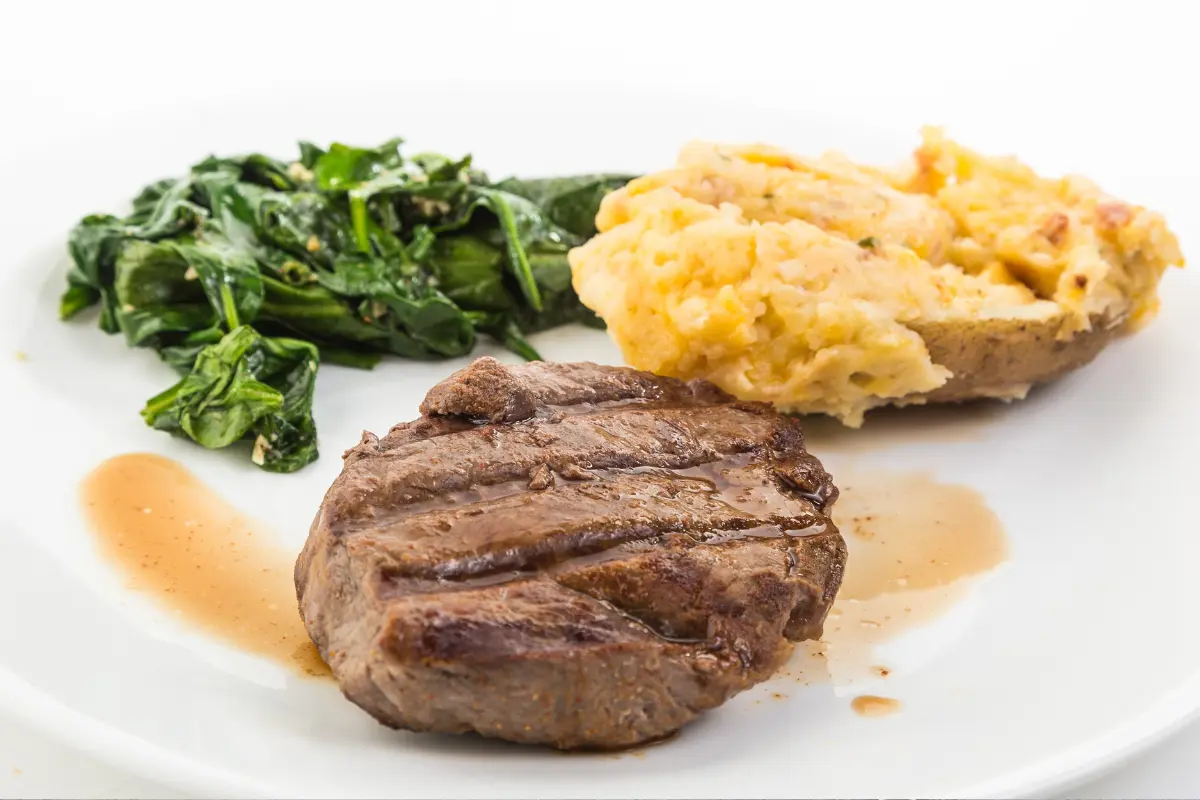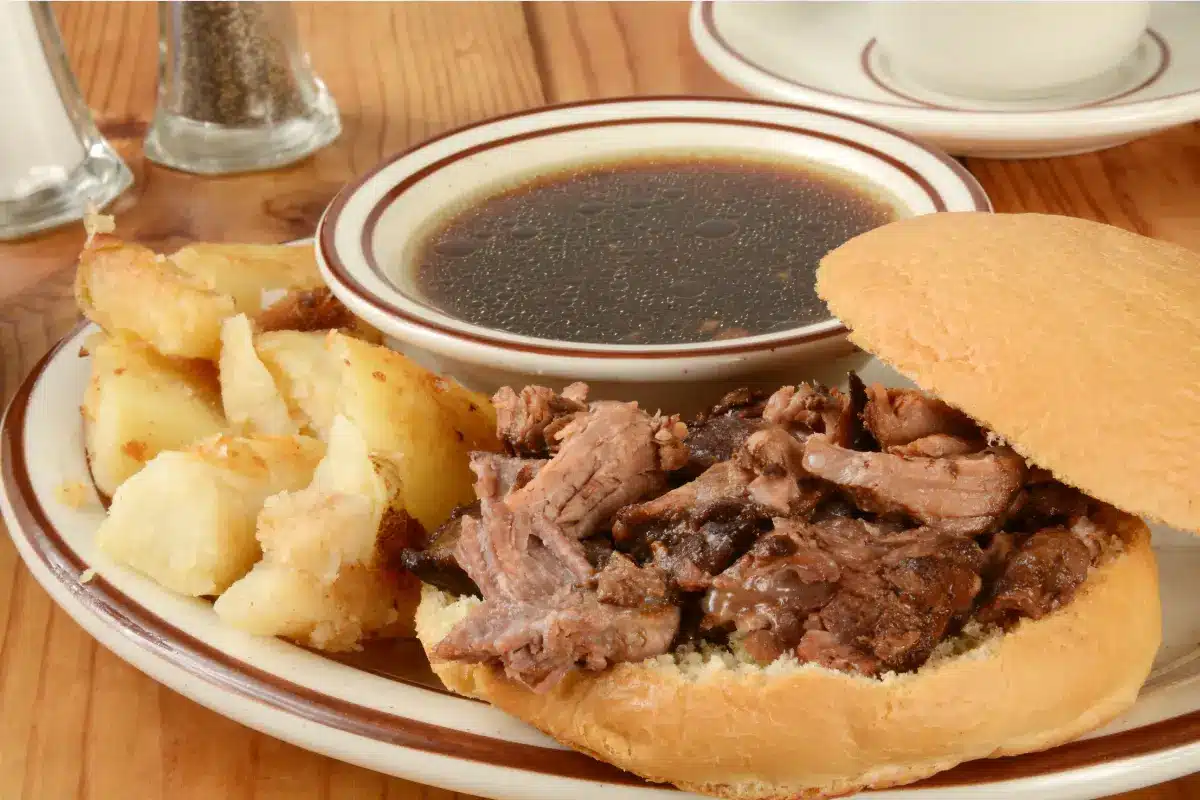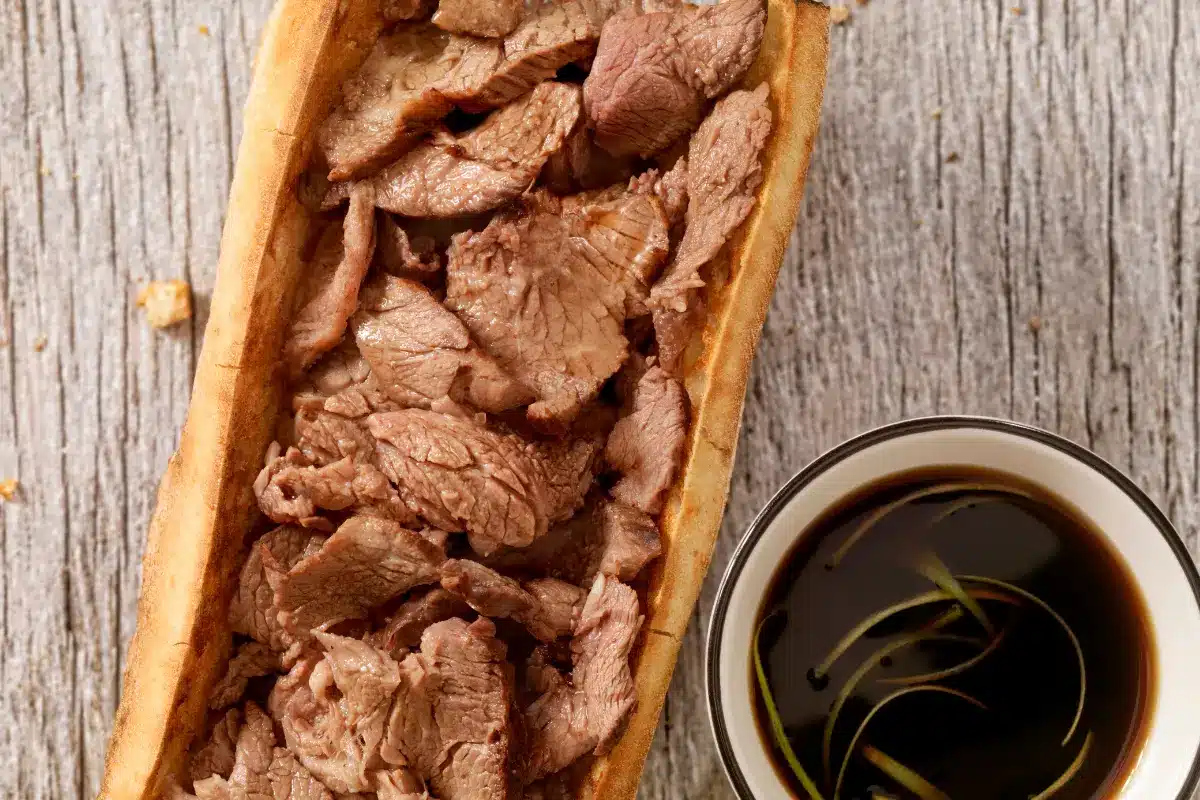Embarking on a culinary journey through the art of crafting the perfect au jus is not just about following a recipe; it’s about embracing tradition, experimenting with flavors, and elevating simple dishes into gourmet experiences. This comprehensive guide dives deep into the world of au jus, offering everything from the basics of its preparation to tips for customizing your sauce, ensuring every reader can master this quintessential culinary component. Whether you’re a seasoned chef or a home cook looking to impress at your next dinner, this article unfolds the secrets to creating a rich, flavorful au jus that will have your guests asking for seconds.
Au Jus recipe
Au jus—a term that whispers elegance and sophistication in the realm of culinary arts. This French term, translating literally to “with juice,” refers to a light, savory sauce often accompanying meat dishes, most notably beef. Its simplicity belies the depth of flavor it adds, transforming ordinary meals into exquisite dining experiences.
What is Au Jus?
At its core, au jus is the essence of meat, refined into a delicate sauce. Traditionally made from the drippings of roasted meat, it captures the soul of the dish, offering a taste that is both profound and comforting. Unlike its thicker cousin, gravy, au jus is prized for its clarity and depth, serving not just as a sauce but as a dip, a base for soups, and even a marinade.
The Culinary Significance of Au Jus
In the culinary world, au jus is not just a sauce; it’s a tradition that has transcended borders. Its versatility is unmatched, pairing as beautifully with a rustic French dip sandwich as with a gourmet roast beef. But beyond its flexibility, au jus holds a place of honor for its ability to enhance flavors without overpowering, making it a staple in kitchens around the globe.
Incorporating au jus into your culinary repertoire is not just about adding a sauce to your dishes; it’s about embracing a tradition that elevates every meal into a celebration of flavor. So, let’s embark on this flavorful journey together, exploring the depths of au jus and how it can transform your cooking from ordinary to extraordinary.
The Au Jus Recipe
Mastering the art of au jus begins with understanding its foundation. A harmonious blend of simplicity and depth, this recipe guides you through creating the perfect au jus, with or without meat drippings. So, roll up your sleeves and get ready to elevate your culinary game with this foolproof au jus recipe.
Ingredients
- Drippings from roast beef (optional)
- 2 Tbsp unsalted butter (if not using drippings)
- 1 1/2 cups beef broth
- 1 Tbsp Worcestershire sauce
- 1/2 tsp garlic powder (if not using drippings)
- 1/2 tsp onion powder (if not using drippings)
- Optional: Sprig of fresh thyme
Preparation Steps
- Start with the Base: If using drippings, skim them from your roast beef. No drippings? No problem! Melt unsalted butter in a saucepan over medium heat as a flavorful alternative.
- Combine and Simmer: Stir in beef broth and Worcestershire sauce. If not using drippings, whisk in garlic and onion powder now. Add a sprig of thyme for an aromatic touch. Bring the mixture to a gentle boil, then reduce heat and let it simmer, melding the flavors together.
- Strain and Serve: After simmering for about 5 minutes, strain your au jus to ensure a smooth texture. Serve it warm alongside your favorite dishes, from roast beef to French dip sandwiches, and watch as it transforms a simple meal into a gourmet experience.
Serving Suggestions
Au jus is remarkably versatile. Drizzle it over roasted meats to enhance their natural flavors, or serve it as a dipping sauce for sandwiches. Its rich, savory essence makes every bite an indulgence.
Tips and Tricks for the Perfect Au Jus
- Quality Matters: The depth of your au jus heavily relies on the quality of beef broth. Opt for homemade or high-quality store-bought broth for the best flavor.
- Balance is Key: While the au jus should be flavorful, it shouldn’t overpower your dish. Adjust seasoning with salt and pepper sparingly, tasting as you go.
- Keep it Clear: Strain your au jus through a fine mesh to remove any solids, ensuring a smooth and clear sauce that’s as pleasing to the eye as it is to the palate.
Embracing the simplicity yet profound depth of au jus not only showcases your culinary skills but also pays homage to a timeless tradition. Whether it’s a weekday dinner or a special occasion, a well-crafted au jus is a testament to the power of simple ingredients coming together to create something truly extraordinary.
Customizing Your Au Jus
A journey through the world of au jus wouldn’t be complete without exploring the ways to tailor it to your taste and the dish it accompanies. This part delves into customizing your au jus, making it a versatile sauce that can elevate various dishes.
With or Without Beef Drippings
The classic au jus is renowned for its use of beef drippings, adding an unrivaled depth and richness. However, the modern kitchen is all about flexibility. If drippings are not on hand, fear not! A blend of unsalted butter, quality beef broth, and a dash of Worcestershire sauce serves as a splendid base. This approach ensures that the essence of au jus—a light, savory sauce that enhances without overwhelming—is preserved, whether it’s a weekday dinner or a festive occasion.
Adjusting Flavors with Herbs and Spices
The foundation of au jus is simple, yet its flavor profile is anything but. Adding herbs like thyme or rosemary can introduce a fragrant note that complements the robustness of the meat. Garlic and onion powders, when used sparingly, lend a subtle depth that can transform the sauce without overtaking the primary flavors. Experimenting with these additions allows you to create an au jus that is both personalized and harmonious with the dishes it accompanies.
Vegan and Vegetarian Alternatives
In a world where dietary preferences are as diverse as the people themselves, adapting classic recipes is a must. For a vegetarian or vegan au jus, swap beef broth with a rich vegetable broth. Adding umami-rich ingredients like soy sauce or a dab of miso paste can mimic the depth traditionally provided by meat drippings. This inclusivity ensures that the joy of a well-crafted au jus can be experienced by all, regardless of dietary choices.
Customizing your au jus is not just about altering a recipe; it’s about crafting an experience. It’s a testament to the sauce’s versatility and a nod to the creativity that cooking invites. Whether you’re adhering to tradition or charting a new course, the perfect au jus is one that speaks to you and enhances the dishes you create with love and care.
Culinary Applications of Au Jus recipe

Exploring the versatility of au jus reveals its ability to transform and elevate an array of dishes, extending far beyond its classic pairing. This section uncovers the culinary breadth of au jus, offering inspiration to incorporate this savory sauce into various meals.
Beyond French Dip: Diverse Uses of Au Jus
While the French dip sandwich remains a beloved classic for featuring au jus, this sauce’s potential doesn’t stop there. Consider drizzling au jus over roasted meats to enhance their flavors or using it as a light gravy alternative for mashed potatoes, providing a sophisticated twist to traditional dishes. Additionally, au jus can beautifully accompany vegetables, lending a savory note that complements their natural taste.
Creative Recipes Incorporating Au Jus
The journey of au jus into your culinary repertoire can be as creative as you allow. Imagine infusing au jus into a risotto, offering a layer of depth and richness that elevates the dish. Or, use au jus as a base for a hearty stew, where its savory essence becomes the backbone of the flavor profile. For an innovative twist, consider using au jus as a marinade for meats, imparting a subtle, complex flavor that enhances the natural qualities of the meat.
Embracing the culinary applications of au jus invites a world of flavor into your kitchen. It’s a testament to the sauce’s versatility and a nod to the endless possibilities that cooking offers. Whether you’re sticking to traditional uses or venturing into new culinary territories, au jus stands ready to transform your meals from the ordinary to the extraordinary.
Nutritional Information and Dietary Considerations
In a world increasingly attentive to health and wellness, understanding the nutritional aspects of our favorite dishes, including au jus, is paramount. This section delves into the health benefits of au jus ingredients and offers guidance on incorporating this beloved sauce into various diets.
Health Benefits of Ingredients Used in Au Jus
The simplicity of au jus belies its nutritional potential, driven by its core ingredients. Beef broth, a staple in au jus, is rich in minerals and collagen, supporting joint health and digestive wellness. For those opting for a vegetarian version, vegetable broth can be a source of essential vitamins and minerals, enhancing the nutritional profile of the sauce. Incorporating herbs like thyme or rosemary not only adds flavor but also introduces antioxidants to your diet, supporting overall health.
Making Au Jus Fit into Various Diets
Au jus can gracefully find its place within a variety of dietary frameworks with a few adjustments. For those following a low-sodium diet, opting for low-sodium beef broth or making a homemade version allows you to enjoy the depth of au jus without concern. Vegetarians and vegans can substitute beef broth with a rich vegetable broth, ensuring the savory essence of au jus is preserved while adhering to dietary restrictions.
Understanding the nutritional dynamics of au jus not only allows us to enjoy this classic sauce with an informed perspective but also opens the door to customizing it to fit our dietary needs and preferences. Whether enhancing a sumptuous roast or adding depth to a vegetable dish, au jus proves to be a versatile and enriching addition to the table, capable of complementing a wide range of dietary considerations.
culinary techniques for enhancing flavors
Frequently Asked Questions
Diving into the savory world of au jus, it’s natural to encounter a few questions along the way. Whether you’re a first-timer or a seasoned chef looking to refine your sauce, this section aims to address those burning queries and ensure your au jus is nothing short of perfection.
Can I Make Au Jus without Beef Drippings?
Absolutely! While beef drippings add a traditional richness to au jus, you can still achieve a delicious sauce without them. Substitute with unsalted butter and lean on high-quality beef broth to build your base. This tweak ensures that the essence of au jus—its light, savory character—is preserved.
What’s the Difference Between Au Jus and Gravy?
Though both born from the drippings of roasted meats, au jus and gravy part ways in texture and preparation. Au jus is a light, clear sauce that enhances the meat’s natural flavors without overwhelming them. Gravy, on the other hand, is thickened with flour or cornstarch, offering a heartier, more robust accompaniment to dishes. Each has its place at the table, with au jus being the choice for those seeking elegance and subtlety.
How Can I Store and Reheat Au Jus?
Au jus is a marvelous addition to meals, and fortunately, it stores well for future use. Cool the sauce completely and transfer it to an airtight container; it will keep in the refrigerator for 3 to 4 days or in the freezer for up to 6 months. To reheat, simply warm it over low heat on the stove, stirring occasionally until it’s ready to serve. This method ensures that the au jus retains its flavor and consistency, ready to enhance your next meal.
What Kind of Red Wine Should I Use?
For a recipe that calls for red wine, selecting one that complements the dish without dominating it is key. Opt for a dry, medium-bodied wine that you enjoy drinking. The wine’s flavor will concentrate as the au jus simmers, so choosing a wine that pairs well with your meal enhances the overall taste experience. Remember, the wine’s role is to add depth and a hint of complexity to the au jus, not to take center stage.
Addressing these FAQs is like adding the finishing touches to a masterpiece. Armed with these insights, you’re not just following a recipe; you’re weaving in layers of flavor and tradition that elevate your culinary creations, making each meal a memorable one.






